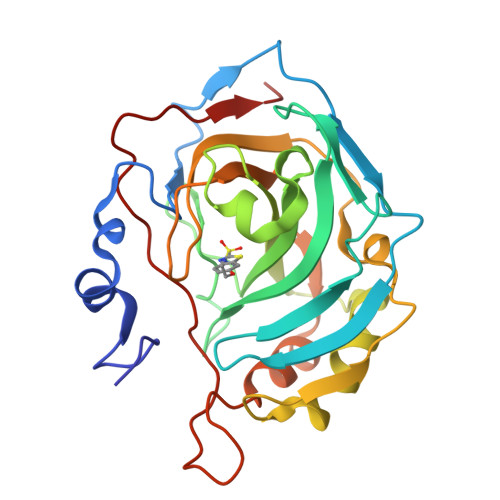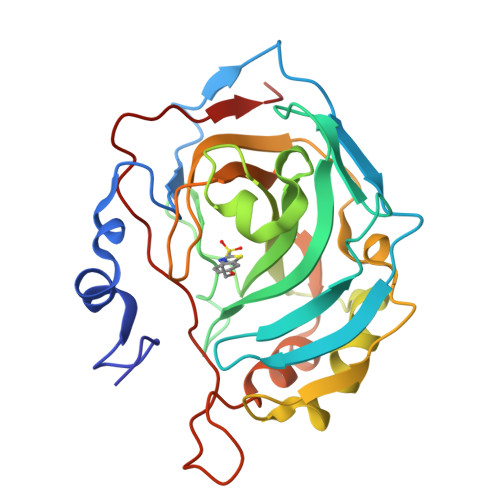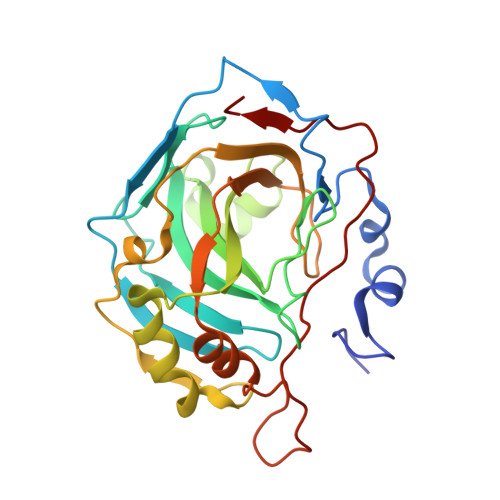Design of a carbonic anhydrase IX active-site mimic to screen inhibitors for possible anticancer properties
Genis, C., Sippel, K.H., Case, N., Cao, W., Avvaru, B.S., Tartaglia, L.J., Govindasamy, L., Tu, C., Agbandje-McKenna, M., Silverman, D.N., Rosser, C.J., McKenna, R.(2009) Biochemistry 48: 1322-1331
- PubMed: 19170619
- DOI: https://doi.org/10.1021/bi802035f
- Primary Citation of Related Structures:
3D8W, 3D9Z, 3DAZ, 3DBU, 3DC3, 3DC9, 3DCC, 3DCS, 3DCW, 3DD0 - PubMed Abstract:
Recently, a convincing body of evidence has accumulated suggesting that the overexpression of carbonic anhydrase isozyme IX (CA IX) in some cancers contributes to the acidification of the extracellular matrix, which in turn promotes the growth and metastasis of the tumor. These observations have made CA IX an attractive drug target for the selective treatment of certain cancers. Currently, there is no available X-ray crystal structure of CA IX, and this lack of availability has hampered the rational design of selective CA IX inhibitors. In light of these observations and on the basis of structural alignment homology, using the crystal structure of carbonic anhydrase II (CA II) and the sequence of CA IX, a double mutant of CA II with Ala65 replaced by Ser and Asn67 replaced by Gln has been constructed to resemble the active site of CA IX. This CA IX mimic has been characterized kinetically using (18)O-exchange and structurally using X-ray crystallography, alone and in complex with five CA sulfonamide-based inhibitors (acetazolamide, benzolamide, chlorzolamide, ethoxzolamide, and methazolamide), and compared to CA II. This structural information has been evaluated by both inhibition studies and in vitro cytotoxicity assays and shows a correlated structure-activity relationship. Kinetic and structural studies of CA II and CA IX mimic reveal chlorzolamide to be a more potent inhibitor of CA IX, inducing an active-site conformational change upon binding. Additionally, chlorzolamide appears to be cytotoxic to prostate cancer cells. This preliminary study demonstrates that the CA IX mimic may provide a useful model to design more isozyme-specific CA IX inhibitors, which may lead to development of new therapeutic treatments of some cancers.
Organizational Affiliation:
Department of Biochemistry and Molecular Biology, College of Medicine, University of Florida, Gainesville, Florida 32610, USA.




















